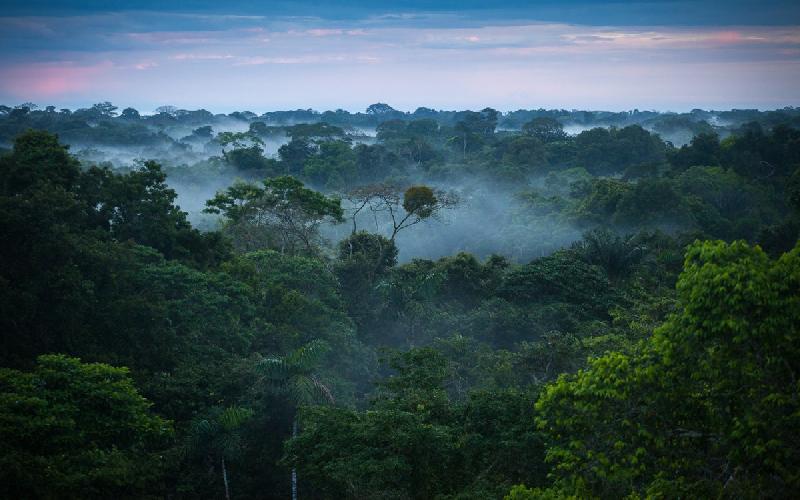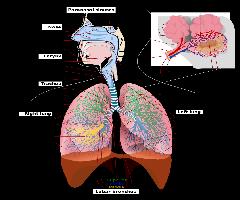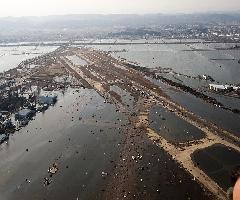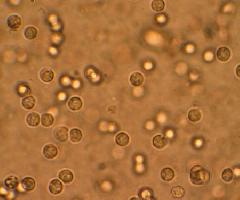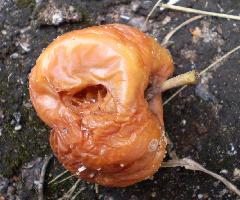A forest is a large area of land covered by a thick growth of trees and other plants. It is the home of many different birds, insects and other animals.
A forest consists of several layers of plants. The uppermost layer is called the canopy. The canopy consists of branches and leaves of the tallest trees in the forest. The canopy receives much sunlight. The middle layer consists of shorter trees, shrubs and herbs. There are some open spaces where animals move about. The lowest layer, the forest floor, is made up of carpets of moss and decayed matter from plants
and animals.All plants, animals and other organisms in a forest need energy to stay alive. As in any other ecosystem, the main source of energy in the forest is the sun. All other organisms depend on plants to get energy of sunlight.
Since canopy receives the most amount of sunlight, it produces the most food. Insects, birds and mammals feed on the leaves and fruits in the canopy. Some birds feed on insects. Inside the forest are animals such as mice, snakes, turtles, deer and other mammals. Some of these animals feed on shrubs and herbs. Some animals feed on other animals.
The forest floor is covered with fallen leaves and small plants like moss. Wastes from animals in the upper layers drop and accumulate on the forest floor. Earthworms, bacteria and fungi are found here. These organisms feed on the wastes and the remains of dead plants and animals. In doing so, they return the nutrients to the soil and to the air to be used again by the plants to make food.
Woody vines, also called lianas, abound in the forest. They climb up the tallest trees to get a share of the light falling on the canopy. Plants depend on the sun’s energy and the inorganic nutrients in the forest to make food. Animals eat plants and other animals to get energy they need to grow and live.
Cooperation and competition are evident in a forest ecosystem. Some organisms in the forest need the cooperation of other organisms so that they will survive. For example, epiphytes like orchids grow on branches of tall trees so that they can get sunlight. Without sunlight, they would die. Many birds, insects and other animals depend on plants for food. The plants, in turn, depend on the animals to pollinate their flowers or to disperse their seeds that will grow into new plants.
Plants have the same needs. Plants in the forest compete with one another to get enough sunlight, water and space. Plants that are best adapted to the conditions in the forest survive and reproduce their own kind. Animals also compete with one another
for food, water and shelter. The animals that are best adapted to forest conditions also survive and reproduce.Forests are important to people in many ways. Wood from forest trees provide us with lumber used for building houses and for making furniture and decorative items. Paper, cellophane, wood-plastic composites and fibers come from processing wood. Other products from wood include latex and turpentine. Some oils, gums and waxes also come from trees.
Plants in the forest continuously five off oxygen to the atmosphere. They also remove carbon dioxide from the air since they use this for photosynthesis. People and animals need oxygen to live. For as long as there are forests, the supply of oxygen will continue. For as long as there are forests, the amount of carbon dioxide will not increase to an alarming level. Too much carbon dioxide in the atmosphere can make the climate warm.
Many forests serve as watersheds. A watershed is a source of water for rivers and streams. Forest soil absorbs rain water. Some of the water is used by plants. Much of the water flows underground and into rivers and streams. The water that flows underground is our source of water for home and industrial use.
Forests also help in conserving soil in preventing floods. The roots of plants soak up large amounts of rainfall. This prevents runoff of water. Runoff water can wash away soil; this is soil erosion. Erosion brings siltation of rivers, making the rivers shallow. During rainy season, shallow rivers easily overflow and cause flooding.
Forests provide homes for many plants and animals. Exotic plants and rare animals can only found in the forest. Many people go to forests to enjoy the beauty of nature. They want to see different kinds of plants and animal in their natural habitat. Some people like to sit under the trees to enjoy the peace and quiet of the surroundings.
Other people use the forest for camping and hiking activities. Some hunt for wild animals in the forest when the hunting season is open.
Forests, therefore, have six important uses:
1. They provide wood and other products that are useful to people.
2. They remove carbon dioxide from air.
3. They protect our water sources.
4. They prevent erosion and floods.
5. They protect wildlife.
6. They provide recreation.
Forests are important for their economic, environmental and enjoyment values.
